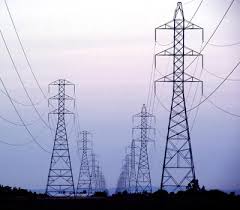 CHENNAI: The countdown for India’s crucial GSLV-D5 rocket powered by an indigenous cryogenic upper stage engine began at the Satish Dhawan Space Centre in Sriharikota at 11.18am on Saturday.
CHENNAI: The countdown for India’s crucial GSLV-D5 rocket powered by an indigenous cryogenic upper stage engine began at the Satish Dhawan Space Centre in Sriharikota at 11.18am on Saturday.
The 49.13-metre rocket with a lift-off mass of 414.75 tonne will carry to space the 1,982-kg GSAT-14 communication satellite with applications in tele-education and tele-medicine. The rocket will lift off at 4:18 PM on Sunday.
After two failures and an aborted attempt at launching the ‘heavy duty’ rocket in the past three years, Indian Space Research Organisation scientists say they are confident of a successful launch this time. “We have done 45 different tests and made several corrections to some components after reviewing the previous flights of GSLV,” Isro chairman K Radhakrishnan told TOI minutes after the 29-hour countdown began on Saturday. “We are confident,” he said.
While India has mastered the PSLV range of rockets with a string of 25 consecutive successes, GSLV, which can carry heavier payloads including humans to space, has remained a challenge. In April 2010, Isro tested its first indigenous cryogenic engine, but it failed a little less than a second after the cryogenic stage ignited. A refurbished GSLV-D5 was to be launched in August 2013, but a leak in the liquid fuel tank forced the mission to be aborted two hours before the rocket was to lift off.
“We have thoroughly studied the past experiences and made changes. We are all upbeat,” said Radhakrishnan while travelling from the Isro headquarters in Bangalore to Sriharikota on Saturday.
The Sriharikota launch pad became active after the mission readiness review team and the launch authorization board cleared the launch on December 28, 2013. Soon the vehicle was moved from the vehicle assembly building to the umbilical tower.
India had got seven cryogenic engines from Russia, and Isro has used six of them. With no affordable supply coming from abroad, India felt the necessity to develop its own cryogenic engine, which uses liquid hydrogen as fuel and liquid oxygen and oxidizer. Cryogenics, the science of extremely low temperatures, has posed a challenge to rocket scientists across the world.
India’s ambitious future space programmes, including interplanetary explorations and manned missions, rest on the shoulders of GSLV. A successful flight of GSLV-D5 on Sunday would be a morale booster for Isro and the best promise for bigger space ventures.


